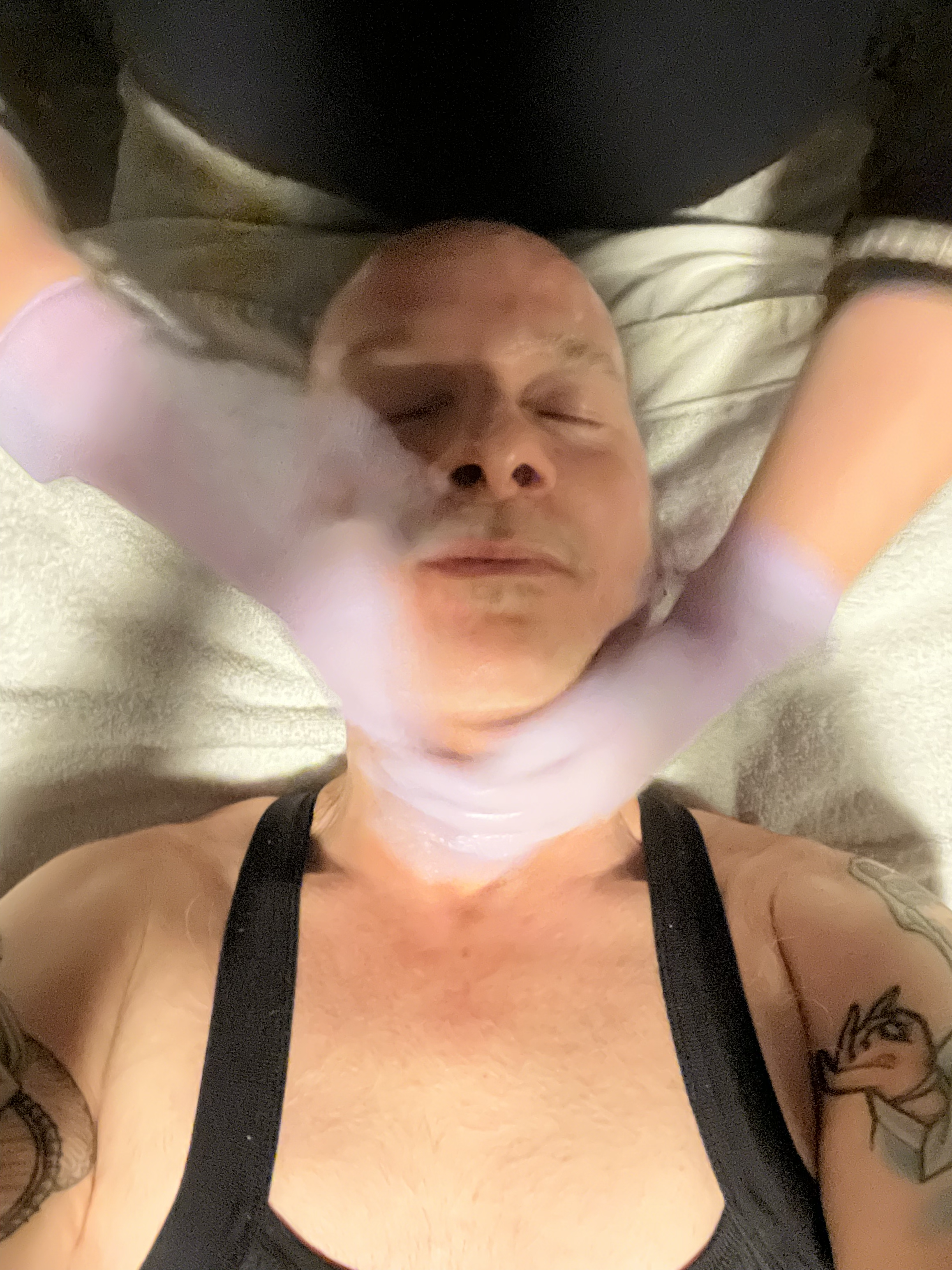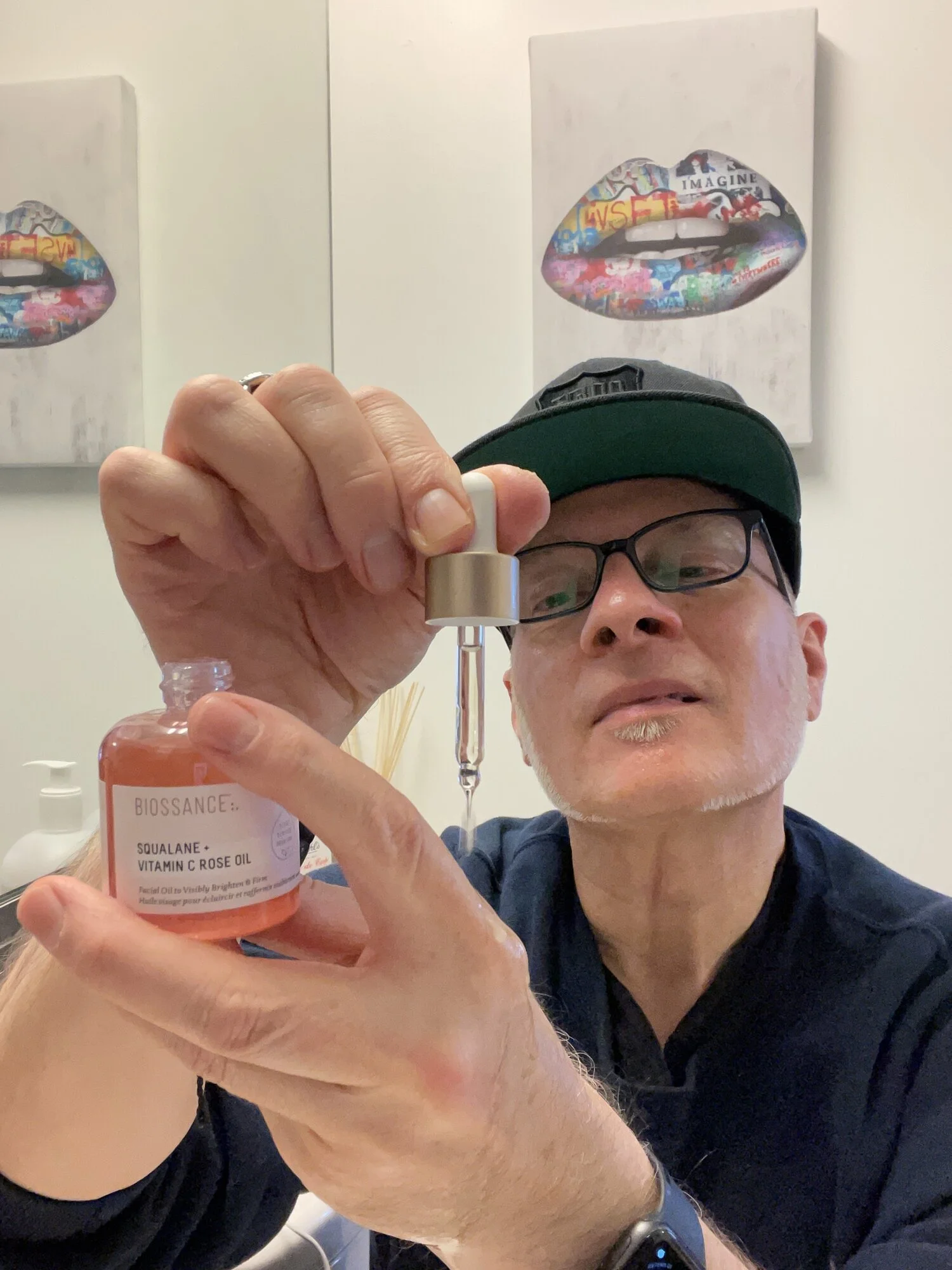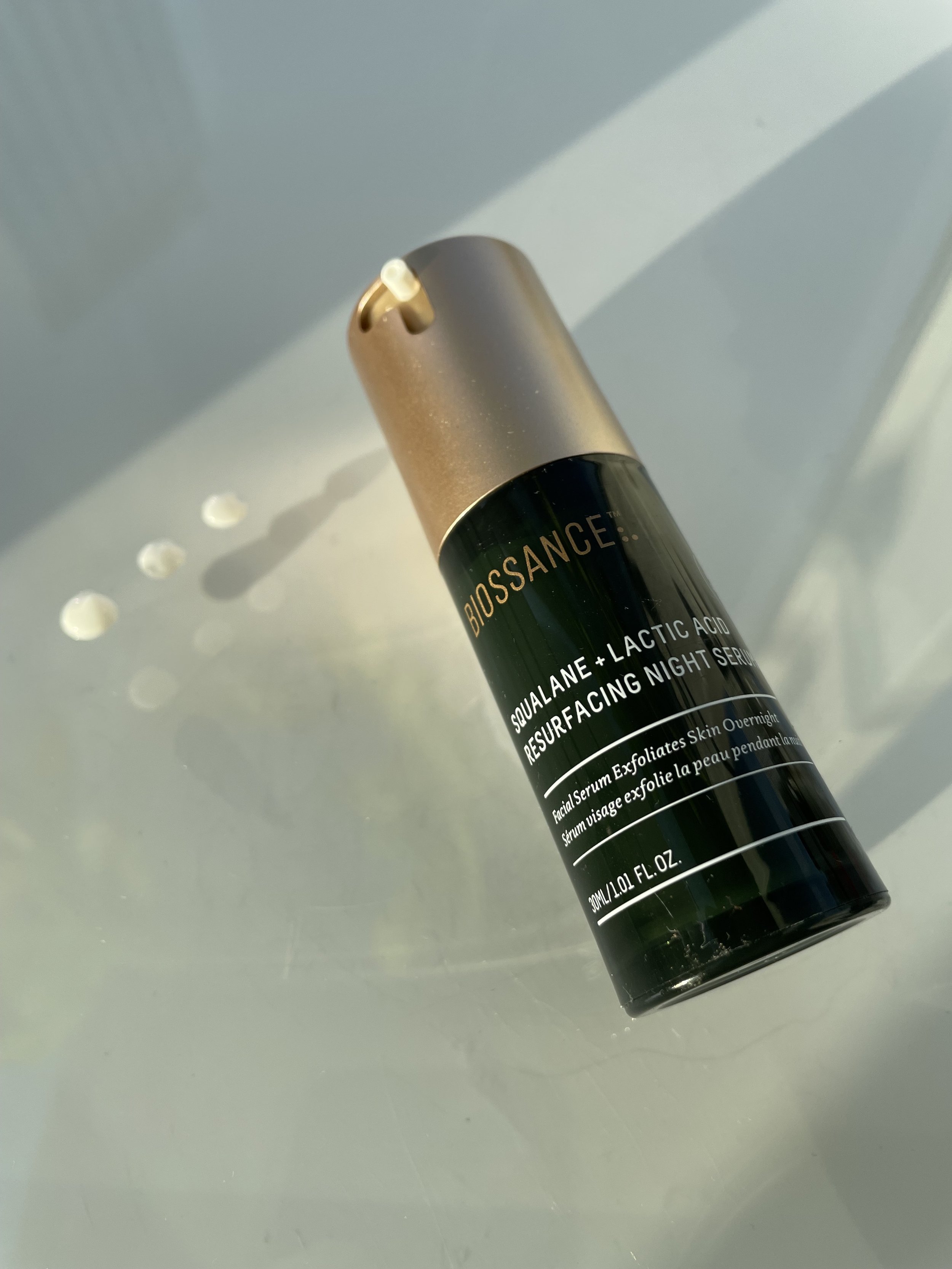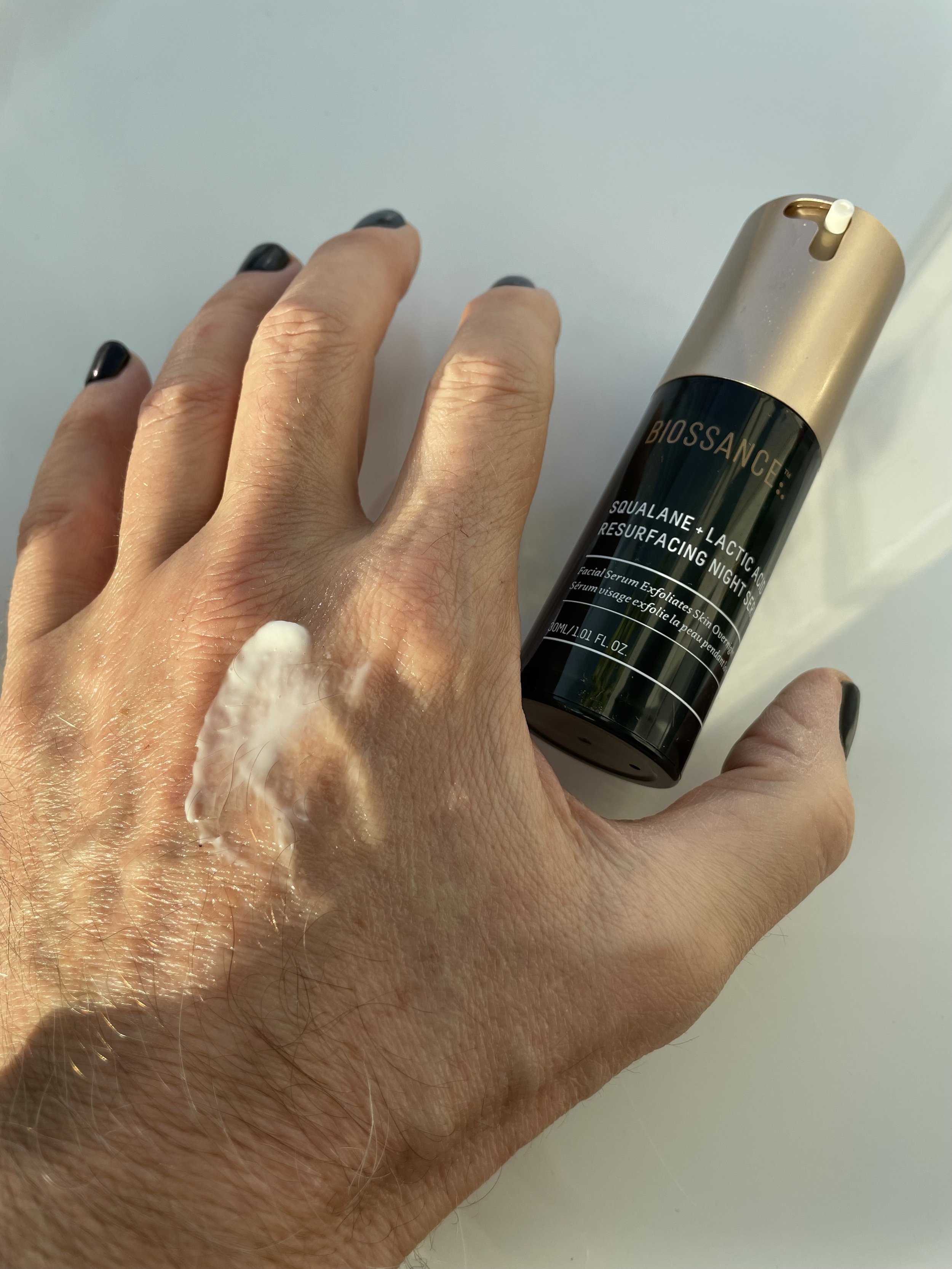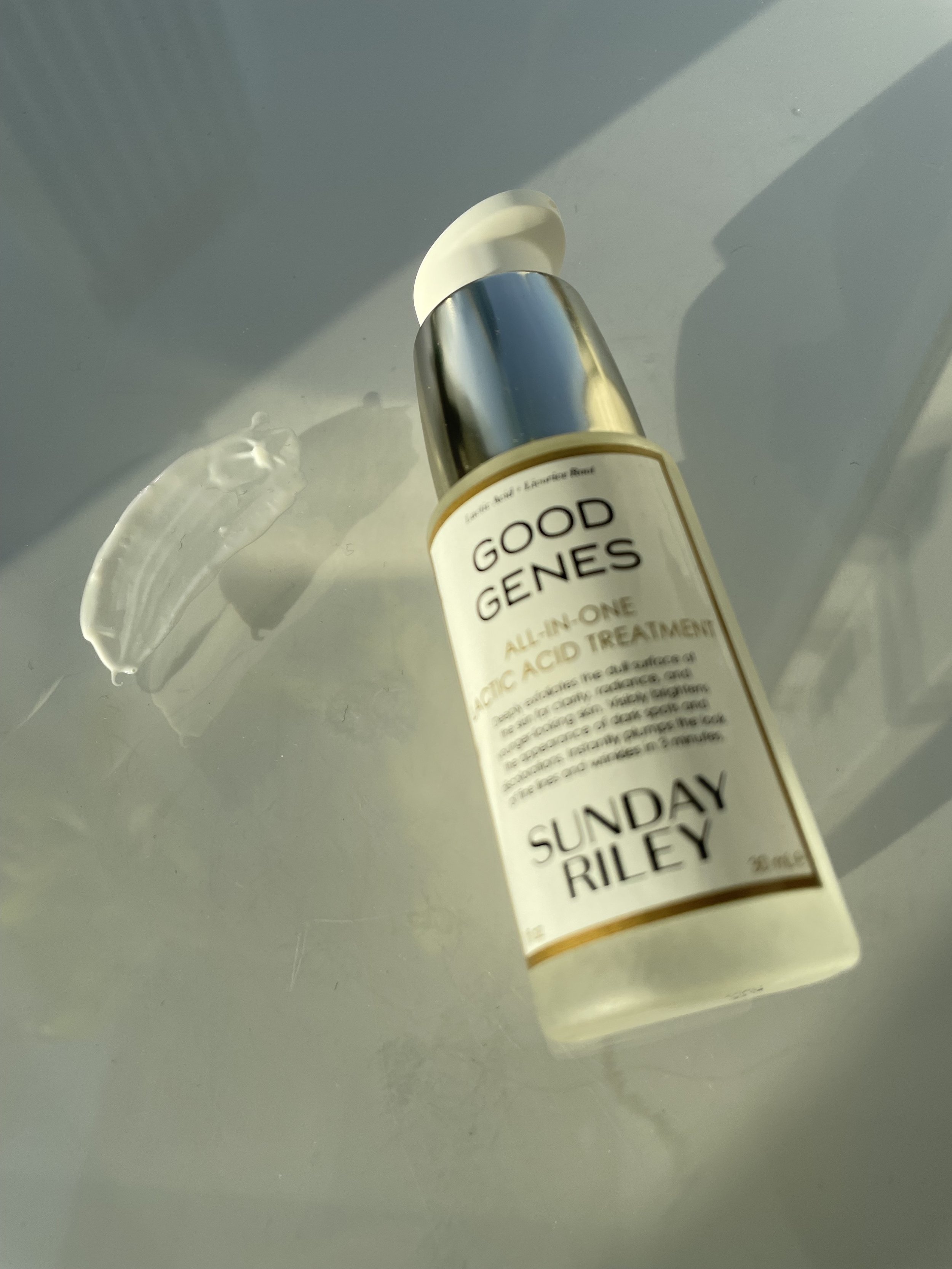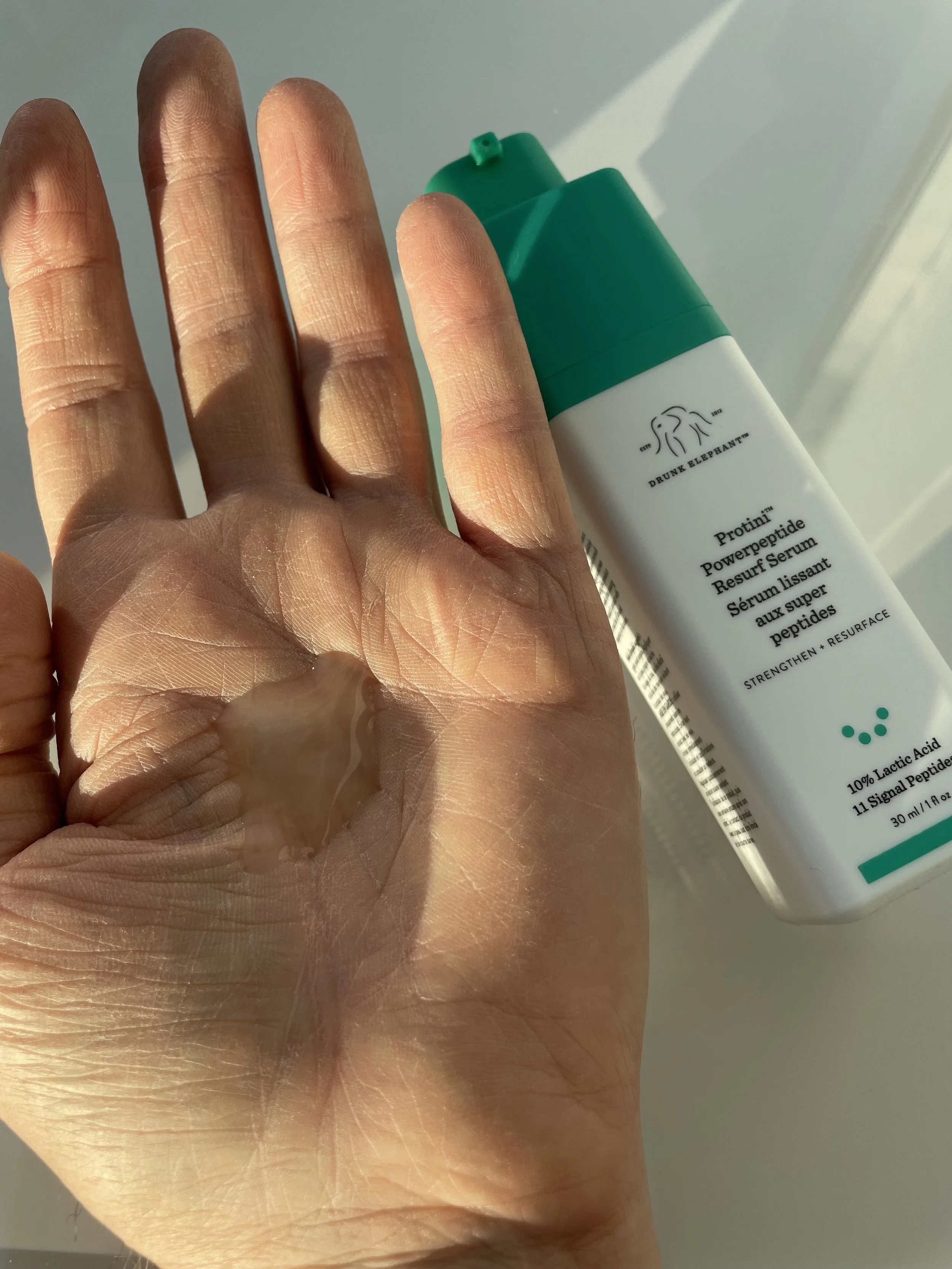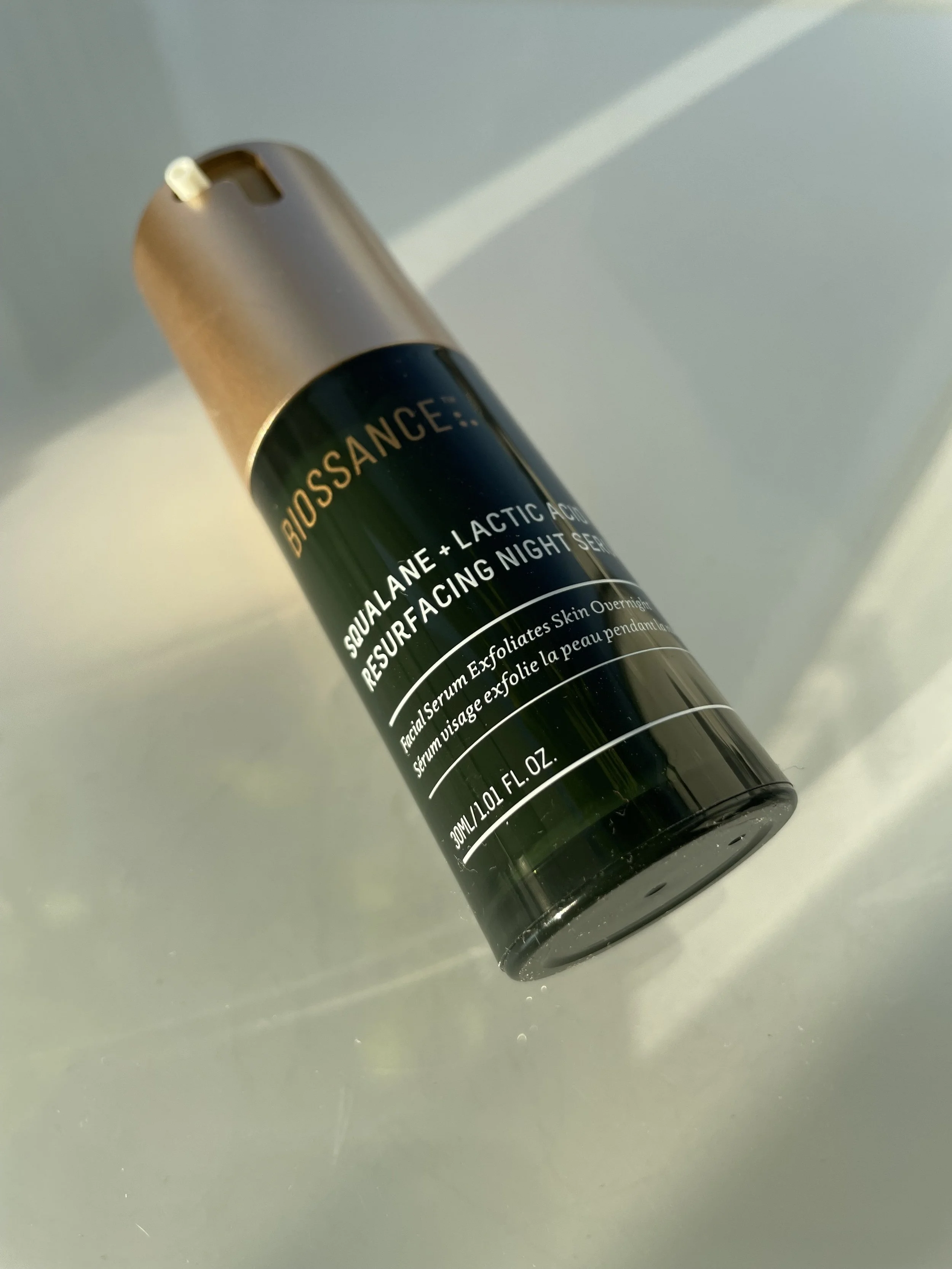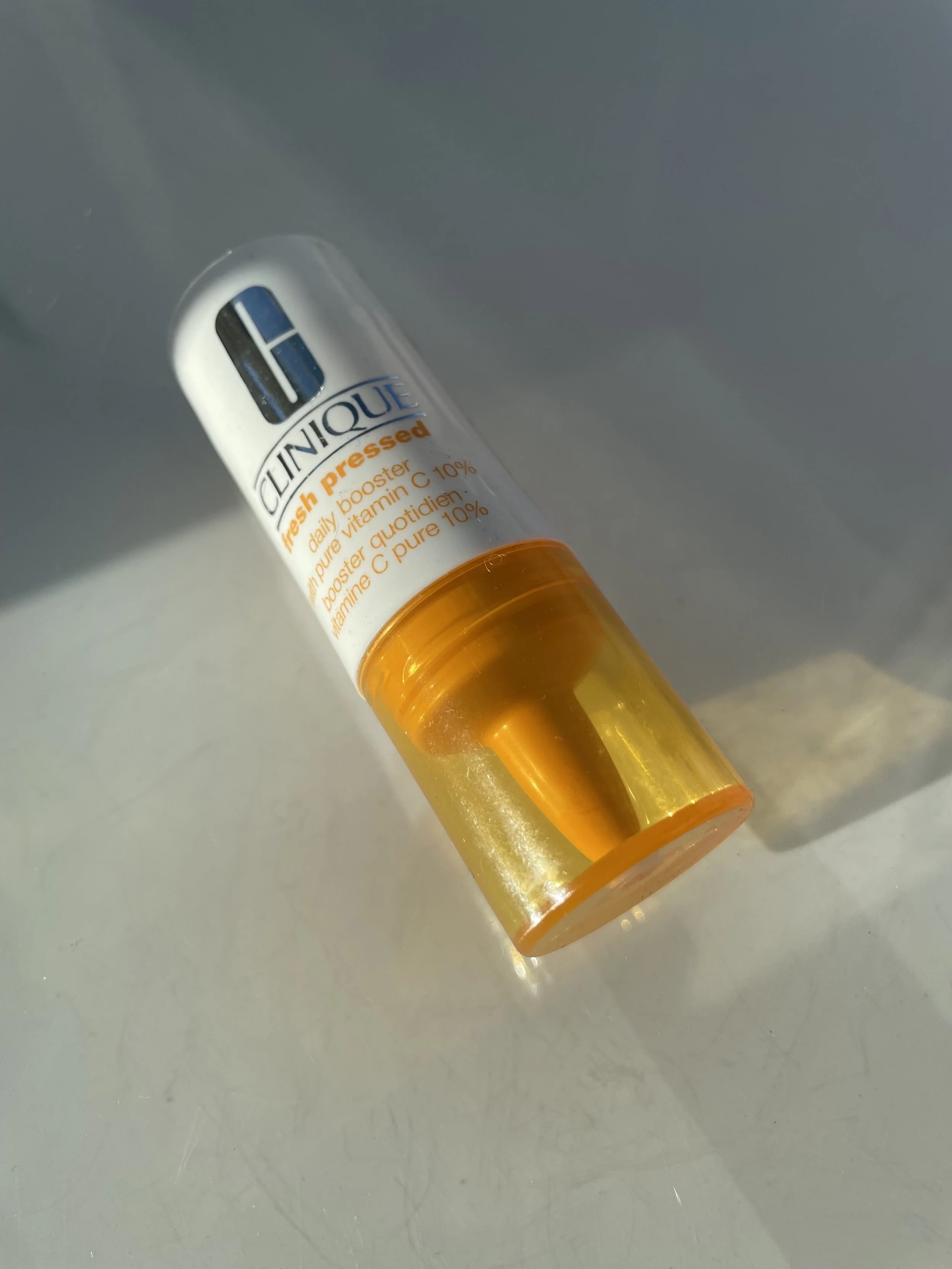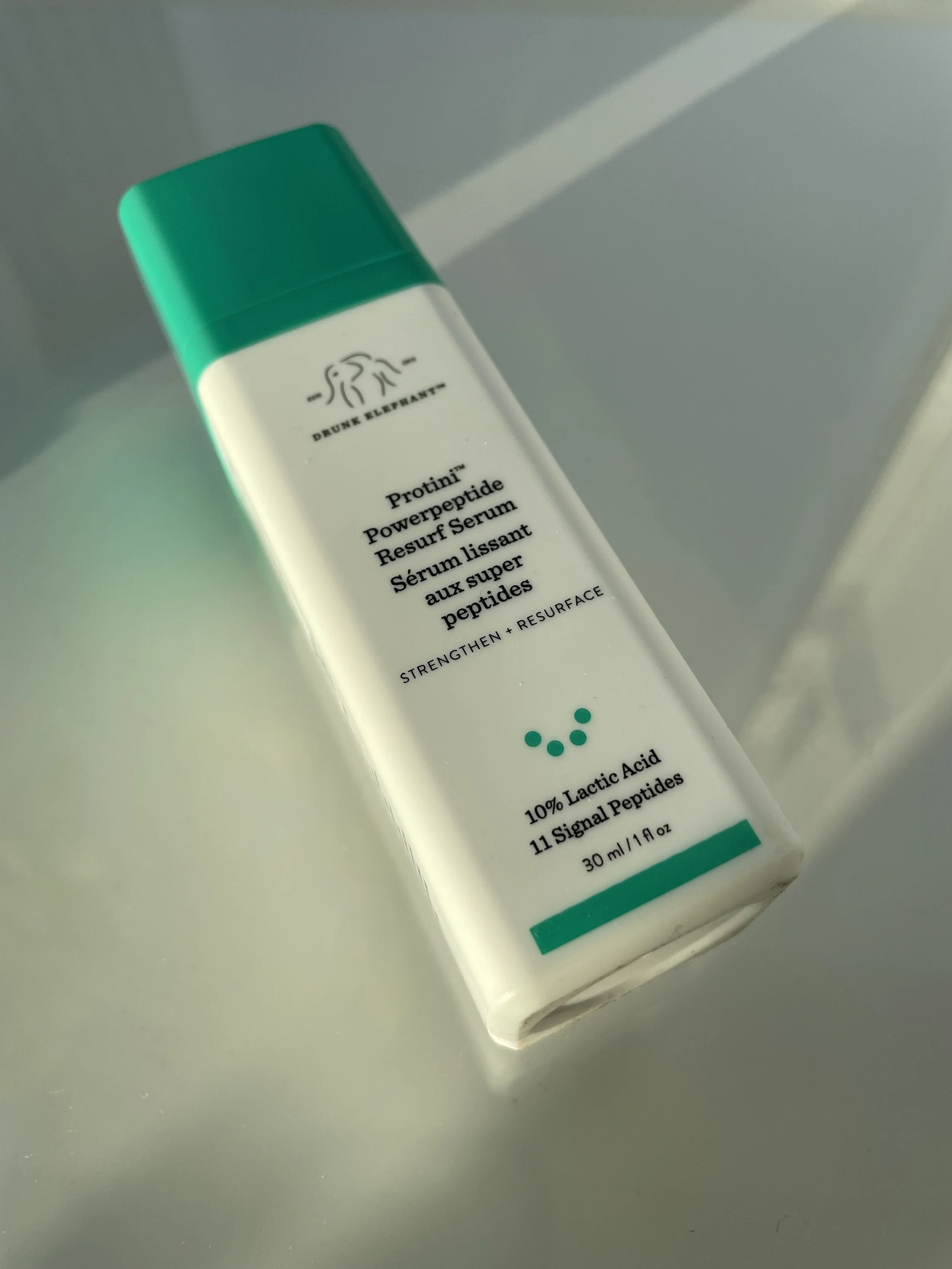3 LACTIC ACID TREATMENTS TO GET YOUR COMPLEXION LIT IN THE NEW YEAR FROM DRUNK ELEPHANT, BIOSSANCE AND SUNDAY RILEY – BEST LACTIC ACID SERUMS, BEST EXFOLIATING SERUMS WITH LACTIC ACID
Today is the coldest day of the year here in NYC, with temps in the mid-20s. I love the crispy air but that’s a bit much.
When it’s this cold outside, I struggle with dehydration — no matter how much water I drink and how much Hyaluronic Acid I apply.
To keep my body hydrated, I try to follow the simple rule of drinking one ounce of water for every pound of body weight. For me, that’s just over 150 ounces of water a day — about three 1.5 liter bottles.
And, of course, I apply lots and lots of humectants in the form of HA serums, toning mists and hydrating toners. Humectants like Hyaluronic Acid, Beta-Glucan, Glycerin and Centella Asiatica lock moisture in the skin. For a run-down of some of my favorite humectant serums, check out my most recent article titled, New Hyaluronic Acid Serums I Love From Farmacy Beauty, Herbivore, Glossier And More - Best Hyaluronic Acid Serums, Best Hydrating Serums For Face. It’s available to read here.
So I do everything I can to keep my skin feeling hydrated and my complexion looking alive.
NEW HYALURONIC ACID SERUMS I LOVE FROM FARMACY BEAUTY, HERBIVORE, GLOSSIER AND MORE
And nothing kickstarts a dull complexion like a facial!
Yesterday, a good friend and I hit up our fave new-age spa in Manhattan’s Lower East Side, the Kollectiv NYC. In addition to sub-zero cryofacials and cryobody treatments, the Kollectiv offers warm, soothing conventional facials — and I certainly needed to power wash my pores. So I scheduled one with my facialist, Toni, who made no mention this time of how clogged my pores were, which was a good sign that I ended the year with relatively healthy skin.
Rather than the expense of a facial at a local spa or clinic, you can always reach for powerful brightening treatments like Vitamin C serums, Niacinamide serums, and acid toners or masks infused with exfoliating AHA’s, BHA’s and PHA’s like Glycolic and Lactic Acids, Salicylic Acid and Gluconolactone.
Last week, I published the first in a series of articles on achieving a brighter complexion in dry, cold weather titled, The Best Fresh Activated Vitamin C Serums To Get Your Complexion Lit in the New Year. You can catch the article here. In it, I featured three of the best Vitamin C serums, each freshly activated for maximum potency and efficacy.
THE BEST FRESH ACTIVATED VITAMIN C SERUMS TO GET YOUR COMPLEXION LIT IN THE NEW YEAR
Among my top picks was the new Drunk Elephant C-Firma Fresh Day Serum, an upgrade of the iconic original C-Firma Vitamin C serum. In 2021, Drunk Elephant reformulated their star Vitamin C serum to be freshly activated. I hadn’t even imagined that C-Firma could be improved upon and the new formula is exceptional.
The second of my fresh-activated Vitamin C picks for a brighter complexion is a true classic: the Clinique Fresh Pressed Daily Booster with Pure Vitamin C 10%. I’ve included Fresh Pressed on the blog several times over the years. It’s certainly stood the test of time and was the first fresh-activated Vitamin C serum I experienced. As I’ve said, I think it’s among the best anti-aging serums for face and much more than a Vitamin C-powered brightening serum.
The third of my fresh activated Vitamin C serums for getting your complexion lit in the new year was the goop beauty GOOPGLOW 20% Vitamin C and Hyaluronic Glow Serum. And like the new Drunk Elephant C-Firma, you combine a liquid in one bottle with a pure Vitamin C powder in the other for a potent brightening treatment.
We’re fortunate that today there are multiple skincare treatments for home use powered by active ingredients that instantly brighten a dull complexion when the dry, low-humidity air sucks the life out of our skin.
Both Niacinamide (Vitamin B3) and Vitamin C are proven skin brighteners with the additional benefit of antioxidant protection, skin strengthening and even retexturizing the skin surface when used at very high levels.
In fact, I use high concentrations of each in my daily skincare routines. And, in the case of Niacinamide, I use multiple products twice daily, including serums, toners and moisturizers that are infused with the antioxidant powerhouse. It’s central to what I refer to as pore maintenance. Daily pore maintenance is the act of deep cleaning pores each day to keep skin functioning at its optimal best — and keep your facialist from criticizing your pore situation.
And I make no secret of the fact that I believe the Paula’s Choice 10% Niacinamide Booster to be among the best anti-aging serums on Earth. It’s the star product at the heart of my daily pore maintenance regimen and not a day goes by that I don’t use it at least once. Which means I go through about a bottle of it a month!
PRODUCT REVIEW: PAULA’S CHOICE 10% NIACINAMIDE BOOSTER – THE BEST NIACINAMIDE SERUM
While Niacinamide serums and Vitamin C serums make superb skin brighteners, they aren’t the only topical skincare products that can get even the dullest complexion glowing with an instant brightening effect. A well-formulated exfoliating acid treatment can, too.
Like vitamin-infused products, acid treatments come in multiple forms. There are acid serums, acid masks and, perhaps the most popular, acid toners infused with exfoliating alpha hydroxy acids, or AHA’s, like Glycolic Acid and my personal fave, Lactic Acid, made from milk.
There are toners infused with beta hydroxy acids, or BHA’s, like Salicylic Acid that power wash pores. Among the best Salicylic Acid toners is the Paula’s Choice Skin Perfecting 2% BHA Liquid Exfoliant. As I understand it, it’s the brand’s top-selling product.
There are even toners formulated with both AHA’s and BHA’s; lately many are also made with the newest and gentlest of the exfoliating hydroxy acids, PHA’s — or polyhydroxy acid. Among the new class of PHA’s are Gluconolactone and Lactobionic Acid.
ACID TONERS – SOME OF THE BEST BHA / AHA TONERS FOR FACE FROM PAULA'S CHOICE, FARMACY AND MORE
I love a good acid toner, but have to confess that my skin doesn’t always tolerate them very well. And that’s okay. I’ve made peace with the fact that Glycolic Acid isn’t my BFF. Except when using it to deodorize my underarms as my daily deodorant! So, we’ve found a way to coexist. Psst…you can catch my article on how to use Glycolic Acid as a deodorant, Skincare Hacks: Glycolic Acid Is the Natural Deodorant that Works! on the blog here.
Even though Glycolic Acid is considered the best acid to exfoliate the skin and instantly brighten the complexion, I prefer its kinder, gentler sibling, Lactic Acid. Like Niacinamide, my skin loves Lactic Acid in multiple products, multiple times a day — at any concentration.
What Is Lactic Acid and What Does Lactic Acid Do for the Skin?
Lactic Acid is my favorite of the range of six or seven alpha hydroxy acids. That’s not something I can say about its more powerful AHA partner in crime, Glycolic Acid. But what makes Lactic Acid so uniquely effective? There’s a great piece on the benefits of Lactic Acid written by the experts on the Paula’s Choice Research Team titled, Lactic Acid for Skin. You can catch the full article here. Here is an excerpt:
Lactic acid is a skin care ingredient that quickly delivers numerous benefits when applied in a well-formulated exfoliating product. When used in a pH-correct formula (whether designed to be left on skin or in a high-strength peel that’s rinsed after several minutes), lactic acid works by gently breaking the bonds that hold dead, dry skin cells to the surface.
If you’re using a rinse-off peel with lactic acid, do so once weekly or every other week. Apply the peel to cleansed skin, leave on for the designated amount of time, rinse, and follow with the rest of your skincare routine.
These dead cells shed on their own when we’re young, but sun damage, aging, and certain skin issues can slow or even stop this process, leading to a buildup of dead skin that creates a dull, older-looking complexion. Regular use of an alpha hydroxy acid (AHA) like lactic acid can turn this around.
As with other acids, research shows lactic acid’s ability to exfoliate effectively depends on the product’s acid concentration, with amounts between 5-12% having reliably impressive results.
And because I love Lactic Acid-infused products so much, I’ve amassed quite a collection of what I consider the best Lactic Acid serums, toners, moisturizers and masks anywhere. Among my favorites are the Kat Burki Goji Essence — one of the most effective Lactic Acid toners I’ve tried. It’s also an absolute pleasure to use and brings me a ridiculous amount of skincare joy. You can catch my review of it on the blog here.
Which brings me to my top three picks of Lactic Acid serums for FW21-22!
No article about Lactic Acid would be complete without the iconic Good Genes All-In-One Lactic Acid Treatment from Sunday Riley. Hands-down, I consider it to be the OG Lactic Acid serum – the first one I ever experienced. I’m likely not alone; it’s that popular. I’m excited to share about it again below.
PRODUCT REVIEW: KAT BURKI GOJI ESSENCE - BEST LACTIC ACID TREATMENT, BEST FERMENTED ESSENCE
New to the scene, and following in the footsteps of Good Genes, is the peptide-powered Drunk Elephant Protini Powerpeptide Resurfacing Serum. In addition to the C-Firma Fresh Day Serum, I’m a longtime fan of Drunk Elephant’s Protini Polypeptide Cream and believe that, at $68, it’s the most anyone should ever pay for a moisturizer.
The Biossance Squalane + 10% Lactic Acid Resurfacing Night Serum is also a new Lactic Acid treatment – and really well-formulated. Infused with skin-replenishing and emollient Squalane, I’ve been enjoying its thicker texture; it’s ideal for keeping skin from drying out in the cold, low-humidity air.
With that, let’s take a look at each of the three Lactic Acid serums I think are ideal for getting your complexion lit in the new year…
Biossance | Squalane + 10% Lactic Acid Resurfacing Night Serum
I’ve only had the opportunity to experience a few Biossance products, something I plan to rectify in 2022. The brand is known for its clean, high-performance skincare infused with sustainably sourced, replenishing Squalane. According to the experts on the Paula’s Choice Research Team, the non-fragrant plant oil is among the best ingredients used in skincare.
Among the most notable of my Biossance discoveries is one of my favorite brightening facial oils with Vitamin C – Biossance’s Squalane + Vitamin C Rose Oil. It’s more of a dry oil than a replenishing facial oil for dry skin, making it ideal for most skin type in most climates and at most times of the year. Remarkably, Squalane + Vitamin C Rose Oil goes on a bit wet but quickly dries down on the skin. It very much reminds of The Ordinary’s 100% Plant-Derived Hemi-Squalane.
Like all of the Biossance products, its star active is Squalane at about a 65-70% concentration of the formula. While I haven’t had much of an opportunity to test drive the brand, what I’ve tried, I’ve enjoyed — including the Biossance Squalane + Zinc Sheer Mineral Sunscreen SPF 30, which I reviewed on the blog here.
PRODUCT REVIEW: BIOSSANCE SQUALANE + VITAMIN C ROSE OIL - BEST FACIAL OIL FOR DRY SKIN
What Is Squalane and What Does Squalane Do for Skin?
Squalane is a richly replenishing, non-fragrant plant oil with moisturizing and antioxidant benefits for the skin similar to Argan Oil, Jojoba Seed Oil and Sunflower Oil. It’s an effective bio-compatible emollient, easily recognized by the skin, that helps to prevent trans-epidermal water loss. Squalane is most commonly extracted from olives, but can be derived from wheat bran, rice bran, and amaranth oils.
According to the experts on the Paula’s Choice Research Team, Squalane is one of the best of the class of plant oils. Here’s what I found most relevant:
Squalane is an emollient that helps prevent moisture loss and restores suppleness to skin. It is also a source of beneficial fatty acids that replenish skin. One unique aspect of squalane is that it’s a modified form of squalene, one of the key components in our sebum (oil). This makes squalane a biocompatible ingredient that skin instantly recognizes and knows how to use.
Despite its sebum-like nature, squalane feels surprisingly lightweight and non-greasy. Squalane can also help strengthen skin’s barrier to help it be less prone to sensitivity and reactiveness.
Beyond its moisturizing properties, squalane also functions as an antioxidant. The antioxidant benefit of squalane also helps it protect skin’s oil from what’s known as lipid peroxidation, a process that damages skin’s surface and deeper in the pore lining where oil originates. This peroxidation is also believed to play a role in acne.
Squalane has been in use as a cosmetic ingredient for decades and has a long track record of safety. In 2019, the Cosmetic Ingredient Review Expert Panel determined squalane continues to be a safe ingredient (their report looked a maximum concentration use at 96.8%). Usage levels in skin care vary depending on desired aesthetics and other emollients present.
WATCH MY VIDEO REVIEW OF
NEW PAMPERING FACIAL OILS THAT WOW ME - FROM KJAER WEIS, BIOSSANCE AND MORE
ON MY YOUTUBE CHANNEL HERE
So, I was excited to experience another product from the brand, the Biossance Squalane + 10% Lactic Acid Resurfacing Night Serum. To start, it’s the thickest of the three Lactic Acid treatments I’m reviewing here.
Likely due to its high level of Squalane Oil at a 10% concentration, the Squalane + 10% Lactic Acid serum has a consistency reminiscent of a thick lotion or lightweight face cream. For some, it would be enough moisture, but for me during the colder months, I like to layer a moisturizer or facial oil over it in my PM routine.
With a relatively tight INCI that runs just under 20 ingredients, it’s a clean, simple formula that delivers 10% exfoliating Vegan Lactic Acid along with the moisturizing oils and humectants skin needs to maintain optimal hydration levels. Among its most beneficial actives are Squalane, Glycerin and Sorbitan Olivate — a blend of fatty acids derived from olive oil and a dehydrated sugar known as sorbitol.
Funny, as hard as I tried, I couldn’t find anything from the Biossance brand that clarifies what is meant by “Vegan Lactic Acid” — or how it’s developed. That’s a bummer since, as a vegan, I’m really intrigued by the concept of it.
My googling determined that while Lactic Acid is derived from milk, the vegan alternative is a product of beet sugar or corn starch fermentation.
While there are none of the tried and true skin soothers in the formula like Bisabolol, Allantoin or even Centella Asiatica, the Biossance Squalane + 10% Lactic Acid Resurfacing Night Serum does seem to be gentle enough on skin. I’ve used it on multiple nights throughout the week and seen no irritation the following mornings.
PRODUCT REVIEW: BIOSSANCE SQUALANE + ZINC SHEER MINERAL SUNSCREEN SPF 30 – BEST ANTI-AGING FACE CREAM
I’m quite fond of the Squalane + 10% Lactic Acid Resurfacing Night Serum formula, though it’s not perfect. At the very end of the INCI, there are two fragrant ingredients: Lavandula Angustifolia (Lavender) Oil and Linalool — a naturally occurring terpene alcohol found in numerous flowers and spice plants including lavender and citrus. Both have the potential to sensitize skin or irritate already sensitive skin.
It’s not a deal-breaker for me as the concentrations are likely too low to cause problems in most skins, though if you’re overly sensitive, you may want to consider one of the other Lactic Acid treatments.
What I like about it: The Biossance Squalane + 10% Lactic Acid Resurfacing Night Serum is a thick, rich Lactic Acid treatment that has the consistency of a heavier moisturizing lotion. It feels wonderful on skin and gently delivers a potent 10% concentration of the AHA for a reliable exfoliating benefit.
What I don’t like about it: There are two fragrant components in the formula that can sensitize skin or irritate already sensitive skin types. Why are they in there?
Who it’s for: All skin types except very sensitive.
SHOP THE BLOG: Purchase the Biossance Squalane + 10% Lactic Acid Resurfacing Night Serum for $62 here.
SKINCARMA X HERBAL FACE FOOD EXCLUSIVE!
FOR A LIMITED TIME, SAVE 20% OFF HERBAL FACE FOOD!
Enter code SKINCARMA20 at checkout.
Sunday Riley | Good Genes All-In-One Lactic Acid Treatment
I’m a big fan of Sunday Riley! My favorites from the popular brand are the Good Genes All-In-One Lactic Acid Treatment, the 5 Stars Retinoid + Niacinamide Eye Serum and the Pink Drink Firming Essence. (Psst…you can catch my review of the fantastic Pink Drink fermented essence on the blog here.)
In my mission to try every Vitamin C serum on Earth, I was fortunate enough this year to finally discover Sunday Riley’s iconic C.E.O. 15% Vitamin C Brightening Serum. With its light, milky texture, it’s become one of my favorite Vitamin C serums in my brightening arsenal.
In fact there are times where I wash my face, apply my go-to Niacinamide serum (the Paula’s Choice 10% Niacinamide Booster) then the C.E.O. 15% Vitamin C Brightening Serum — and go straight to bed! The stuff makes a perfectly legitimate brightening moisturizer when you don’t want or need anything too heavy.
PRODUCT REVIEW: SUNDAY RILEY C.E.O. 15% VITAMIN C BRIGHTENING SERUM - BEST VITAMIN C SERUM FOR FACE
But I’m here to talk Lactic Acid!
The Sunday Riley Good Genes All-In-One Lactic Acid Treatment is the OG. It was among the first Lactic Acid exfoliating treatments I tried — and could very well have been the first. In fact, as I recall, Sunday Riley’s Good Genes put Lactic Acid on the map for me. I had little if any awareness of the gentler AHA prior.
To start, let me say that this stuff isn’t cheap! At $85 for 1 oz. (30mL), you could be forgiven for having really high expectations of the iconic Lactic Acid serum — as I initially did. But rest assured, it’s one of the most well-formulated and best exfoliating treatments with Lactic Acid. So you’re getting something that’s legitimately pro-skin health for your money.
When I first started using it again this year, I wanted to really put the product to the test and pushed the envelope. I used Good Genes nightly for three straight nights. I know people who use it daily without hesitation, which is great if your skin can tolerate that.
Personally, I don’t believe that skin needs daily exfoliation through aggressive skincare treatments. Cell turnover happens on its own. In fact, every skin cell originating in the lower levels of the skin rises to the surface within 28 days — where it’s freed from the body like pollen cast into the wind from a wild poppy.
Any brightening benefit you get through an acid treatment should be sustained over several days. That’s how you prevent yourself from overdoing its and sensitizing your skin.
With my multi-day experiment, I gotta say I was surprised that I saw no irritation on any of the following mornings. So I dialed it back to every other night and saw solid results that way.
How Often Should I Exfoliate My Face and Is it OK to Exfoliate Face Everyday?
Personally, in my experience, I don’t believe it’s necessary to exfoliate every day. Over time, over-exfoliation can sensitize the skin and leave you with few daily options for brightening your complexion. Of course, it depends on the type of exfoliation (e.g. chemical vs. physical) and the strength of the product you’re using.
I found a really cool piece on the Byrdie website titled, Ask a Dermatologist: How Often Should I Exfoliate My Face? Here are a few excerpts from the article, which you can read in its entirety here.
What are the main benefits of exfoliating your face?
Let’s start from the top: Why exfoliate your skin in the first place? According to celebrity esthetician (and Byrdie's favorite skincare guru) Renée Rouleau, there are a plethora of benefits to regular exfoliation for all skin types. For those prone to blemishes and clogged pores, exfoliation should be the main focus of your routine. There are a few different types of exfoliants (which we'll get to in a second), but for these acne-prone skin types, Rouleau recommends using a chemical exfoliant formulated with beta hydroxy acid (try her BHA Clarifying Serum), which will work "to reduce bacteria on the skin while exfoliating and cleaning clogged pores."
How often should you exfoliate your face?
The answer to our million-dollar question is pretty universal across the board: You should exfoliate your face about two to three times a week. (An acid serum two to three nights a week, plus a weekly mask or peel is a great routine to shoot for.) You may have heard only once a week, but dermatologists say that for most skin types, that's not enough. According to Dove dermatologist Mona Gohara, MD, "We lose 50 million skin cells a day, and if they remain on the skin, it can look dull and dry." Encouraging that extra layer of skin cells to go on their merry way two to three times a week is the secret to smooth, glowing skin.
That said, gentle exfoliation like the kind that Sunday Riley’s Good Genes Lactic Acid delivers helps to speed up the desquamation process, leaving the complexion free of dead skin, enhancing the penetration of actives and boosting your glow. With Good Genes, you get a healthy glow without the irritation common to acid treatments.
I think the reason for that more gentle effect is the product’s blend of soothing ferments and healing aloe and arnica. As I said in my review of the Biossance Squalane + 10% Lactic Acid Resurfacing Night Serum, it’s those skin soothers that make all the difference. And with Good Genes, they’re all at higher concentrations than the Lactic Acid itself. Bravo, Sunday Riley!
Not that it’s such an exact science, but Sunday Riley has clearly achieved the right balance. What makes Good Genes iconic? Well, it’s gentle, yet effective, has a dope name (hah!) and is a whole sensorial experience. Yes, it smells great, too! (Maybe as a result of the Lemongrass Extract.)
Plus, I gotta admit that it’s priced like it’s iconic…
PRODUCT REVIEW: SUNDAY RILEY 5 STARS RETINOID + NIACINAMIDE EYE SERUM – BEST EYE CREAM WITH RETINOL
What I like about it: The Sunday Riley Good Genes All-In-One Lactic Acid Treatment is legitimately one of the best Lactic Acid treatments — and the true OG. It’s got the perfect blend of exfoliating Lactic Acid at a 10% concentration and proven skin soothers that help to ameliorate the potential sensitizing effects of an AHA.
What I don’t like about it: At $85 for one ounce, it’s a bit pricey and out of reach of many consumers who would otherwise benefit from the exceptional formula.
Who it’s for: All skin types, even sensitive.
SHOP THE BLOG: Purchase the Sunday Riley Good Genes All-In-One Lactic Acid Treatment for $85 here.
Drunk Elephant | Protini Powerpeptide Resurfacing Serum
Yes, I love Lactic Acid. That sounds kinda weird, doesn’t it? But it’s quite true. For my skin, Lactic Acid is the most effective acid exfoliant. So yeah, I’m a fan.
I’m also a fan of Drunk Elephant — like all serious skincare users. And I’m fond of numerous Drunk Elephant products, among them the Slaai Makeup-Melting Butter Cleanser — one of the best cleansers for dry skin in winter.
And as I’ve said, I was a longtime user of the brand’s original C-Firma Vitamin C serum and a recent convert to Drunk Elephant’s new, freshly activated C-Firma Fresh Day Serum. It’s a surprising upgrade of the original and quite literally one of the best brightening serums with Vitamin C available. Psst…you can catch my review of it on the blog here.
Oh, and how could I forget Drunk Elephant’s E-Rase Milki Micellar Water? I’d never come across a milky cleansing water before it. E-Rase has a thick, milky texture that reminds me very much of the Dr. Jart Ceramidin Liquid — and it’s quite soothing and comforting in dry, cold weather.
PRODUCT REVIEW: DRUNK ELEPHANT E-RASE MILKI MICELLAR WATER – ONE OF THE BEST CLEANSERS FOR DRY SKIN
So with my fanboy love of Lactic Acid and just about anything from Drunk Elephant I was super excited to be among the first to try the brand’s new Protini Powerpeptide Resurfacing Serum.
Both the new Protini Powerpeptide Resurfacing Serum and the classic Sunday Riley Good Genes All-In-One Lactic Acid Treatment are equally effective exfoliating serums powered by Lactic Acid. I am not certain of the exact level of Lactic Acid in Good Genes, but it’s somewhere around a 5% concentration; the Protini Powerpeptide Resurfacing Serum is powered by twice that, at 10%.
When testing it out, I used the Protini Powerpeptide Resurfacing Serum nearly nightly for about two weeks and saw no signs of irritation, particularly on my overly sensitive forehead. My forehead is always the indicator that a product is too harsh for my skin as it’s the only place on my face that’s reactive.
In addition to its 10% concentration of Lactic Acid, the Protini Powerpeptide Resurfacing Serum formula contains eleven signal peptides, rather blandly referred to as a Signal Peptide Complex.
What Are Signal Peptides in Skincare and What Do Peptides Do for Skin?
As I understand it, signal peptides communicate with cells, prompting them to function more efficiently. Signal peptides can help teach damaged skin to rebuild itself by relocating proteins in the cell membrane. Such cool, wonky science that.
There’s a terrific article on all things peptides by the experts on the Paula’s Choice Research Team simply titled, Peptides for Skin. Here’s an insightful excerpt from the piece:
What Are Peptides?
First, we need to start with the science: Peptides are fragments of proteins. On their own, peptides are made up of amino acids. When amino acids are combined in certain formations they create specific peptides (and there are hundreds of peptides), and when peptides are formed in a certain way, they make specific proteins.
Proteins are the fundamental building blocks of skin. Without peptides, skin doesn’t remain intact and the result is loss of firmness, appearance of wrinkles, texture changes, and skin that doesn’t bounce back as it once did.
What’s so fascinating about peptides is that abundant research has clearly shown that each of them works in very specific ways to target an exact skin care need. They also teach skin to do what's required to help revitalize these building blocks, which can help revive aging skin.
Peptides in Skin Care: A Balanced View
Although there are intriguing reasons to consider peptides as a significant part of a skin care formula as we did with our unique PEPTIDE BOOSTER, we also want you to know there's a lot of hype around what they can do. Sadly, the hype is often completely blown out of proportion. Peptides can do amazing things for skin, but they do not replace what cosmetic corrective procedures can do, as many companies have claimed over the years.
There's no single ingredient solution for all the signs of aging and other skin problems we endure, and peptides are no exception. You would be cheating your skin to think that any single peptide (or any other specific skin care ingredient) is your skin's solo rescuer. We use this multi-ingredient "cocktail" approach when we formulate all Paula's Choice Skincare products, including our PEPTIDE BOOSTER, which contains a mix of eight distinctive peptides, several amino acids, and skin-replenishing ingredients.
Promising new research has us excited about using peptides in skin care products. Their ability to help revitalize skin's building blocks so it becomes more resilient is a wonderful asset for skin, but keep your expectations realistic, or you will be disappointed.
In addition to the anti-aging peptides in the Protini Powerpeptide Resurfacing Serum, there are multiple amino acids in the formula — as well as a number of powerful antioxidants, including Green Tea Extract and Apple Fruit Extract that will help skin defend itself against environmental free radical damage.
It’s the texture of the Protini Powerpeptide Resurfacing Serum for me though! It’s a super light, semi-translucent serum that’s quite easily layered into any skincare routine — and the lightest of the three Lactic Acid serums I’m reviewing here.
What I like about it: The Drunk Elephant Protini Powerpeptide Resurfacing Serum is a near-perfect exfoliating and anti-aging serum developed with a high concentration of 10% Lactic Acid. I really love the texture, which is more reminiscent of a conventional serum, making it quite easy to layer into any skincare routine.
What I don’t like about it: At $82 for one ounce, it’s priced out of the range of most people, though I would imagine that Drunk Elephant fans are accustomed to their higher pricing. At least you’re getting an excellent formula for the cost.
Who it’s for: All skin types, even sensitive, oily and acne-prone.
SHOP THE BLOG: Purchase the Drunk Elephant Protini Powerpeptide Resurfacing Serum for $82 here.
That’s it, guys! I hope you’ve enjoyed my deep dive into my favorite gentle Lactic Acid treatments for the getting your complexion lit in the new year. Get one for yourself and get your complexion glowing.
See you next week…
💟 Carmine @skincarma
SKINCARMA X HERBAL FACE FOOD EXCLUSIVE!
FOR A LIMITED TIME, SAVE 20% OFF HERBAL FACE FOOD!
Enter code SKINCARMA20 at checkout.
WATCH MY VIDEO REVIEW
THE YEAR’S BEST VITAMIN C SERUMS WITH PAULA'S CHOICE, SUNDAY RILEY, THE INKEY LIST AND MORE!
ON MY YOUTUBE CHANNEL HERE
WATCH MY VIDEO REVIEW
THE YEAR’S BEST VITAMIN C SERUMS WITH THE ORDINARY, CLINIQUE, BEAUTY STAT & MORE!
ON MY YOUTUBE CHANNEL HERE
WATCH MY VIDEO REVIEW
COOL CLEAN FACIAL SUNSCREENS TO KEEP US SAFE AND SMILING IN THE SUN!
ON MY YOUTUBE CHANNEL HERE
WATCH MY VIDEO REVIEW OF
SKINCARE HACKS: GLYCOLIC ACID IS THE NATURAL DEODORANT THAT WORKS!
ON MY YOUTUBE CHANNEL HERE
WATCH MY VIDEO REVIEW
THE BEST HYALURONIC ACID SERUMS FROM PAULA'S CHOICE, THE INKEY LIST, GHOST DEMOCRACY & MORE
ON MY YOUTUBE CHANNEL HERE
WATCH MY VIDEO REVIEW OF
A SELFCARE SUNDAY NOT FOR THE FAINT OF HEART – WITH THE PAULA’S CHOICE 25% AHA PEEL!
ON MY YOUTUBE CHANNEL HERE
WATCH MY VIDEO REVIEW
AMPERNA PROBIOTIC SKINCARE AND TWO OF THE BEST ANTI-AGING SERUMS FOR SENSITIVE SKIN
ON MY YOUTUBE CHANNEL HERE
The Ingredient List of the Biossance Squalane + 10% Lactic Acid Resurfacing Night Serum:
 exf|h|buff, Squalane
exf|h|buff, Squalane  sii|emo 0 1, Glycerin
sii|emo 0 1, Glycerin  sii|h 0 0, Sodium Hydroxide buff, Cetearyl Olivate
sii|h 0 0, Sodium Hydroxide buff, Cetearyl Olivate  emu, Propanediol solv|h, Sorbitan Olivate
emu, Propanediol solv|h, Sorbitan Olivate  emu, Cetearyl Alcohol emo|vc|emu|surf 1 2, Lespedeza Capitata Leaf/Stem Extract, Polyacrylate Crosspolymer-6 vc, Acacia Senegal Gum, Sodium Gluconate chel|h, Xanthan Gum vc, Phenoxyethanol pres, Ethylhexylglycerin pres, Lavandula Angustifolia (Lavender) Oil
emu, Cetearyl Alcohol emo|vc|emu|surf 1 2, Lespedeza Capitata Leaf/Stem Extract, Polyacrylate Crosspolymer-6 vc, Acacia Senegal Gum, Sodium Gluconate chel|h, Xanthan Gum vc, Phenoxyethanol pres, Ethylhexylglycerin pres, Lavandula Angustifolia (Lavender) Oil  amic|perf, Linalool
amic|perf, Linalool  perf
perfThe Ingredient List of the Good Genes All-In-One Lactic Acid Treatment:
 perf, Aloe Barbadensis Leaf Extract
perf, Aloe Barbadensis Leaf Extract  so|emo|h, Cypripedium Pubescens Extract, Opuntia Vulgaris Leaf Extract, Agave Tequilana Leaf Extract, Saccharomyces Cerevisiae (Yeast) Extract
so|emo|h, Cypripedium Pubescens Extract, Opuntia Vulgaris Leaf Extract, Agave Tequilana Leaf Extract, Saccharomyces Cerevisiae (Yeast) Extract  h, Leuconostoc/Radish Root Ferment Filtrate amic|pres, Caprylic/Capric Triglyceride emo, Squalane
h, Leuconostoc/Radish Root Ferment Filtrate amic|pres, Caprylic/Capric Triglyceride emo, Squalane  sii|emo 0 1, Lactic Acid
sii|emo 0 1, Lactic Acid  exf|h|buff, PPG-12/Smdi Copolymer emo, Propanediol solv|h, Butylene Glycol h|solv|vc 0 1, Stearic Acid emo|vc 0 2-3, Dimethicone emo 0 1, Cetearyl Alcohol emo|vc|emu|surf 1 2, Phenyl Trimethicone emo, Disiloxane, Ceteareth-20 emu|surf 3 2, Glyceryl Stearate emo|emu 0 1-2, PEG-100 Stearate surf|emu 0 0, Stearyl Glycyrrhetinate so, Glycyrrhiza Glabra Root Extract
exf|h|buff, PPG-12/Smdi Copolymer emo, Propanediol solv|h, Butylene Glycol h|solv|vc 0 1, Stearic Acid emo|vc 0 2-3, Dimethicone emo 0 1, Cetearyl Alcohol emo|vc|emu|surf 1 2, Phenyl Trimethicone emo, Disiloxane, Ceteareth-20 emu|surf 3 2, Glyceryl Stearate emo|emu 0 1-2, PEG-100 Stearate surf|emu 0 0, Stearyl Glycyrrhetinate so, Glycyrrhiza Glabra Root Extract  so|sb, Cymbopogon Schoenanthus (Lemongrass) Oil, Potassium Hydroxide buff, Phenoxyethanol pres, Xanthan Gum vc, Caprylyl Glycol h|emo, Chlorphenesin pres|amic, Sodium Phytate chel
so|sb, Cymbopogon Schoenanthus (Lemongrass) Oil, Potassium Hydroxide buff, Phenoxyethanol pres, Xanthan Gum vc, Caprylyl Glycol h|emo, Chlorphenesin pres|amic, Sodium Phytate chelThe Ingredient List of the Drunk Elephant Protini Powerpeptide Resurfacing Serum:
 sii|h 0 0, Lactic Acid
sii|h 0 0, Lactic Acid  exf|h|buff, Dicaprylyl Carbonate emo, Squalane
exf|h|buff, Dicaprylyl Carbonate emo, Squalane  sii|emo 0 1, Sodium Hydroxide buff, Glycine Max (Soybean) Seed Extract, Sclerocarya Birrea Seed Oil
sii|emo 0 1, Sodium Hydroxide buff, Glycine Max (Soybean) Seed Extract, Sclerocarya Birrea Seed Oil  emo, Camellia Sinensis Seed Oil h, Sodium PCA
emo, Camellia Sinensis Seed Oil h, Sodium PCA  sii|h 0 0, Caprylic/Capric Triglyceride emo, Borago Officinalis Seed Oil
sii|h 0 0, Caprylic/Capric Triglyceride emo, Borago Officinalis Seed Oil  so|emo, Tremella Fuciformis Polysaccharide
so|emo, Tremella Fuciformis Polysaccharide  h, Tocotrienols, SH-Oligopeptide-1 cci, SH-Oligopeptide-2 cci, SH-Polypeptide-1 cci, SH-Polypeptide-9 cci, SH-Polypeptide-11 cci, Copper Palmitoyl Heptapeptide-14
h, Tocotrienols, SH-Oligopeptide-1 cci, SH-Oligopeptide-2 cci, SH-Polypeptide-1 cci, SH-Polypeptide-9 cci, SH-Polypeptide-11 cci, Copper Palmitoyl Heptapeptide-14  , Heptapeptide-15 Palmitate, Palmitoyl Tetrapeptide-7
, Heptapeptide-15 Palmitate, Palmitoyl Tetrapeptide-7  cci, Palmitoyl Tripeptide-1
cci, Palmitoyl Tripeptide-1  cci, Palmitoyl Tripeptide-38
cci, Palmitoyl Tripeptide-38  cci, Palmitoyl Hexapeptide-12
cci, Palmitoyl Hexapeptide-12  cci, Tripeptide-1
cci, Tripeptide-1  cci, Pyrus Malus (Apple) Fruit Extract
cci, Pyrus Malus (Apple) Fruit Extract  h, Propanediol solv|h, Sodium Hyaluronate
h, Propanediol solv|h, Sodium Hyaluronate  sii|h 0 0, Panthenol
sii|h 0 0, Panthenol  so|h 0 0, Sodium Hyaluronate Crosspolymer
so|h 0 0, Sodium Hyaluronate Crosspolymer  sii|aox|h, Sodium Lactate
sii|aox|h, Sodium Lactate  buff|h, Pca
buff|h, Pca  sii|h, Alanine
sii|h, Alanine  sii, Arginine
sii, Arginine  sii, Glycine
sii, Glycine  sii, Histidine
sii, Histidine  sii|h, Isoleucine
sii|h, Isoleucine  sii, Phenylalanine
sii, Phenylalanine  sii, Proline
sii, Proline  sii, Serine
sii, Serine  sii, Threonine
sii, Threonine  sii, Valine
sii, Valine  sii, Adenosine
sii, Adenosine  cci, Nymphaea Alba Root Extract, Bacillus/Folic Acid Ferment Filtrate Extract aox|h, Symphytum Officinale Callus Culture Extract, Dextran vc, Oryza Sativa (Rice) Bran Oil
cci, Nymphaea Alba Root Extract, Bacillus/Folic Acid Ferment Filtrate Extract aox|h, Symphytum Officinale Callus Culture Extract, Dextran vc, Oryza Sativa (Rice) Bran Oil  aox|emo, Linoleic Acid
aox|emo, Linoleic Acid  sii|emo|surf, Linolenic Acid
sii|emo|surf, Linolenic Acid  sii|emo|surf|perf, Butylene Glycol h|solv|vc 0 1, Acetyl Glutamine, Coconut Alkanes emo|solv, Coco-Caprylate/Caprate emo, Pentylene Glycol solv|h, Isomalt h, Lecithin
sii|emo|surf|perf, Butylene Glycol h|solv|vc 0 1, Acetyl Glutamine, Coconut Alkanes emo|solv, Coco-Caprylate/Caprate emo, Pentylene Glycol solv|h, Isomalt h, Lecithin  emo|emu, Xanthan Gum vc, Aspartic Acid
emo|emu, Xanthan Gum vc, Aspartic Acid  sii, Phytosphingosine
sii, Phytosphingosine  sii|cci|aacne|amic, Phospholipids
sii|cci|aacne|amic, Phospholipids  sii|emo, Glycine Soja (Soybean) Sterols emo, Tocopherol
sii|emo, Glycine Soja (Soybean) Sterols emo, Tocopherol  aox 0-3 0-3, Citric Acid buff, Lactic Acid/Glycolic Acid Copolymer, Polyvinyl Alcohol vc, Phenoxyethanol pres, Sodium Benzoate pres, Hydroxypropyl Cyclodextrin
aox 0-3 0-3, Citric Acid buff, Lactic Acid/Glycolic Acid Copolymer, Polyvinyl Alcohol vc, Phenoxyethanol pres, Sodium Benzoate pres, Hydroxypropyl Cyclodextrin  , Polysorbate 20 emu|surf 0 0, Caprylyl Glycol h|emo, Phenylpropanol perf|solv, Chlorphenesin pres|amic, Carbomer vc 0 1, Glyceryl Caprylate emo|emu, Ethylhexylglycerin pres
, Polysorbate 20 emu|surf 0 0, Caprylyl Glycol h|emo, Phenylpropanol perf|solv, Chlorphenesin pres|amic, Carbomer vc 0 1, Glyceryl Caprylate emo|emu, Ethylhexylglycerin pres


